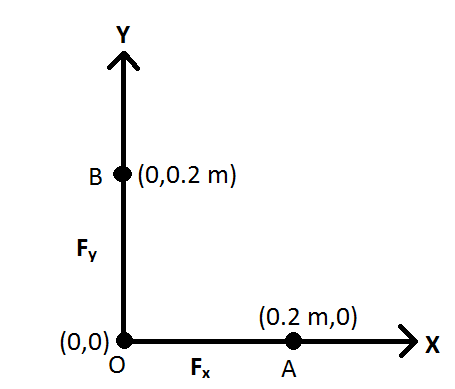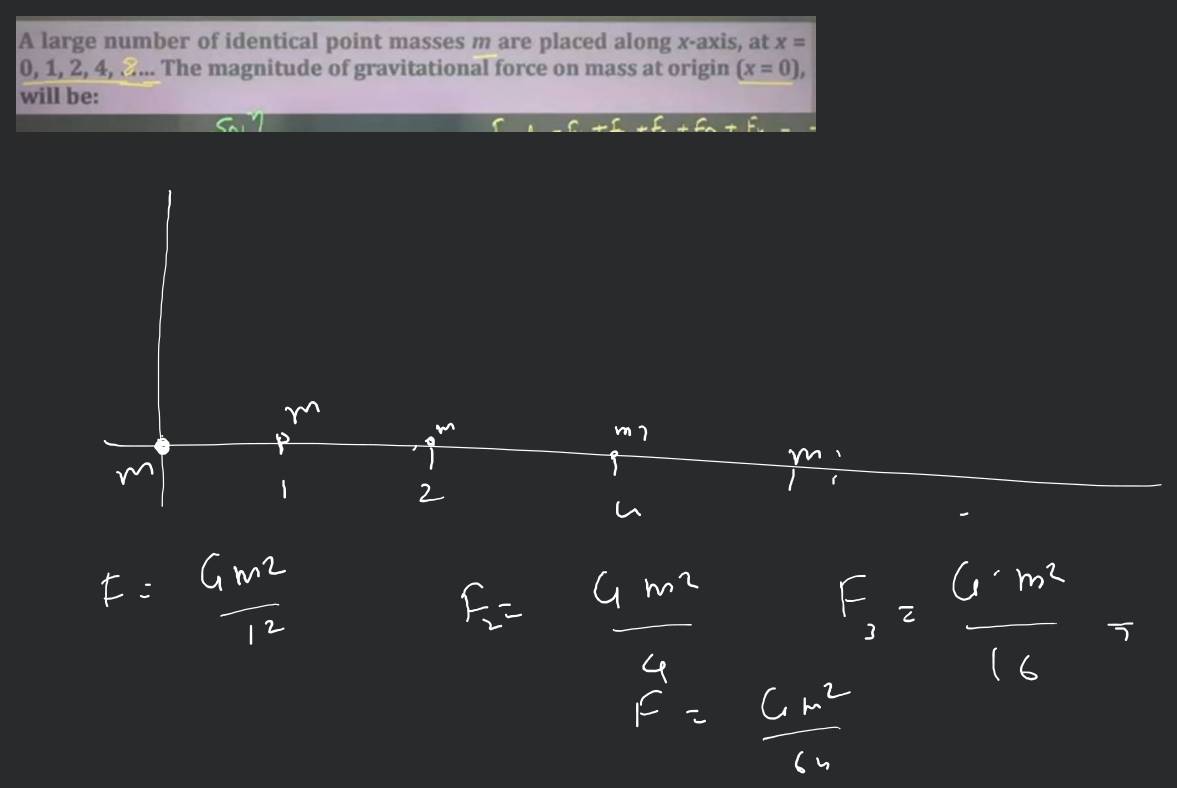20. A large number of identical point masses m are placed along x-axis, x € 0, 1, 2, 4, .. The magnitude of gravitational force on mass origin (x = 0), will
4.6 (96) In stock

Click here:point_up_2:to get an answer to your question :writing_hand:20 a large number of identical point masses m areplaced along xaxis at x
Click here👆to get an answer to your question ✍️ 20- A large number of identical point masses m are placed along x-axis- x - 0- 1- 2- 4- - The magnitude of gravitational force on mass origin -x - 0- will be m m m x - 0 x - 1 x - 2 m - - - 4 and so on -1- Gm2 Gm -3- Gm -4- Gm- 1- Three particles A Band

Three identical point masses, each of mass $1\,kg$ lie in the x-y plane at points $\left( {0,0} \right)$ ,$\left( {0,0.2\,m} \right)$ and $\left( {0.2\,m,0} \right)$ . The gravitational force on the mass

10.4 Moment of Inertia and Rotational Kinetic Energy

10. A large number of identical point masses m are placed along x-axis, a..

GRAVITATION A large number of identical point masses m are kept

GRAVITATION A large number of identical point masses m are kept
An infinite number of identical point objects, each of mass 'm', are placed on the x-axis - Sarthaks eConnect

10. A large number of identical point masses m are placed along x-axis, x = 0, 1, 2, 4, . The magnitude of gravitational force on mass ongin (x = 0), will

Infinity point masses each of mass m are kept along X-axis 1m, 2m, 4m, 8m, 16m, .00 marks. Find the net gravitational force on a point mass of 1 kg kept the

10.) A large number of identical point masses m are placed along x-axis, x = 0, 1, 2, 4, .. The magnitude of gravitational force on mass origin ( x = 0), will

A large number of identical point masses each of mass m are placed along x axis, at x = 0, 1, 2, 4, The magnitude of gravitational force on the mass at origin x=0, will be
Multiplication of Large Numbers, Free PDF Download - Learn Bright
X-Large Number Stickers 1 - 100. Planner Stickers. 100 Envelope Challenge || F752
Figure 21. [Y-axis scale with large numbers.]. - Assay Guidance
Totaling the total number of Quantity Needed per Size - Microsoft Community
- Women's Throwback Barre Sock curated on LTK
 Musculação para Mulher: 9 super Benefícios da Musculação Feminina!
Musculação para Mulher: 9 super Benefícios da Musculação Feminina! Knee Brace Support Men Women Knee Brace Sleeve Patella Support Stabilizer Compression Fit Support for Joint Pain and Arthritis Relief
Knee Brace Support Men Women Knee Brace Sleeve Patella Support Stabilizer Compression Fit Support for Joint Pain and Arthritis Relief Ropa interior sexy para mujer, calzones de encaje para mujer, de algodón, Dhoti para mujer (rojo sandía, XL) : Ropa, Zapatos y Joyería
Ropa interior sexy para mujer, calzones de encaje para mujer, de algodón, Dhoti para mujer (rojo sandía, XL) : Ropa, Zapatos y Joyería Girdle Faja Women Lycranylon Braless Strapless
Girdle Faja Women Lycranylon Braless Strapless Buy Alo Yoga® Legend Jacket - Espresso At 20% Off
Buy Alo Yoga® Legend Jacket - Espresso At 20% Off